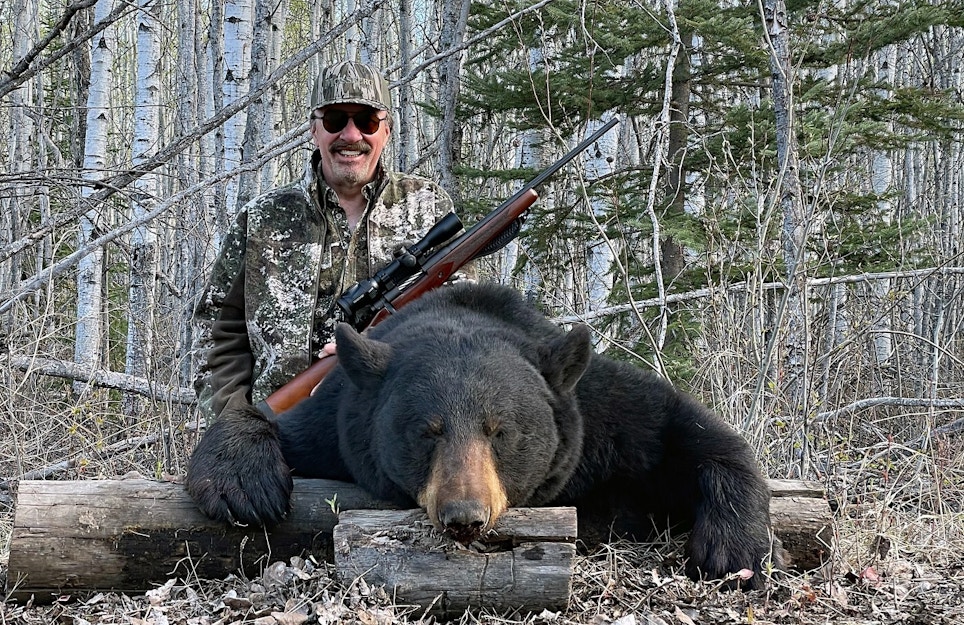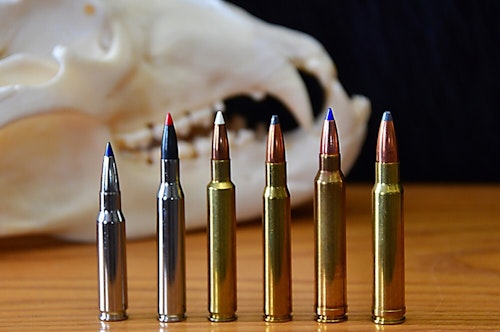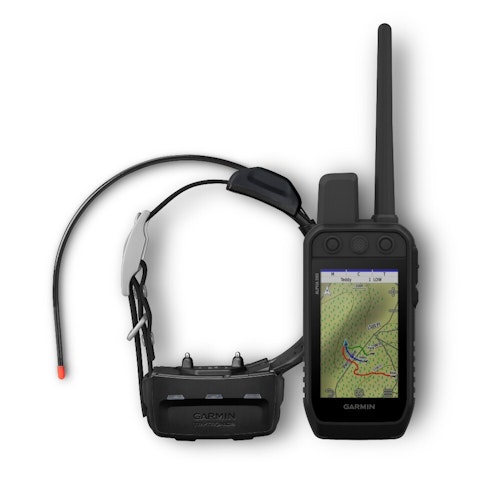If you’re not catering to black bear hunters, you might be missing out on a significant chunk of revenue. Black bears are one of the most popular big-game species in North America, and it’s easy to understand why. Estimates of the black bear population range as high as high as 900,000, making them the most populous bear species in the world, and they are one of the most widely distributed game animals in North America. While they are predominantly a creature of the coniferous and hardwood forests, black bears are very adaptable and can make a living in habitats ranging from chaparral and desert to swamps and tundra. Their range is expanding in many areas where they were once extirpated.
Given their broad distribution, and the fact that many areas have both spring and fall hunting seasons for black bears, the gear most desired by hunters depends on three factors: where the bears are being hunted, how they are being hunted and what conditions they’re being hunted in. Weather can run the gamut from snowy and frigid to rainy or hot, and the needs of the spot-and-stalk hunter differ from the needs of hunters pursuing bears behind hounds or those hunting bears from treestands over bait. I’ve taken some big bears using all three methods and offer these suggestions to ensure you’re stocking the gear bear hunters want.
Rifles
Bolt-action rifles are by far the most popular rifles for hunting black bears, and they’re available at a wide range of price points. For customers on a tight budget, popular choices include standard versions of rifles like the Ruger American, Savage Axis, Winchester XPR, Franchi Momentum, Thompson/Center Compass II and others. One of the best rifles in this category is the Mossberg Patriot. I used one last year, chambered in 308 Win., to take two giant black bears in northern Alberta. Some of these budget rifles are offered in more refined versions with prices that can push them close to the mid-priced category, where there are already lots of options.
Good choices for your hunters in mid-priced rifles include the Weatherby Vanguard, Mauser M18, Savage 110, Tikka T3X, Kimber Hunter, Christensen Mesa and Howa 1500. Some basic-level models in the CZ 600, Bergara and Browning X-Bolt rifle lines also fit in this price category, as do some of the basic Ruger Hawkeyes and Winchester Model 70 guns.
Customers willing to pay for the best will gravitate toward rifles like Weatherby Mark V, Bergara Canyon, Christensen Ridgeline, Nosler Model 21 and Benelli Lupo, along with high-end versions of the Browning X-Bolt, Seekins Havak, Winchester Model 70 and others.
Lever-action rifles are also popular with those who are hunting bears at close range over bait or behind hounds. The most popular lever guns include a host of models from Winchester and Henry as well as the Browning BLR. Ruger has resurrected the Marlin 1895 and has, by all accounts, improved the quality of the rifle. Initial chambering is in 45-70 Govt., which will definitively do the job on black bears at reasonable range.
Ammunition
Experienced bear hunters likely already have a favorite cartridge for black bears, but first-time bear hunters often make the mistake of assuming they need one of the big magnums, which many people can’t shoot well due to their heavy recoil. Black bears are not that hard to kill, and most hunters would be better-served using many of the same cartridges commonly used for deer. The popular and mild-recoiling 6.5 Creedmoor will take black bears with properly placed shots, but it is not my first choice. More potent options include the .270 Win. .280 Rem., .280 Ackley Improved, 7mm-08 Rem., .308 Win., .30-06 Springfield, .300 WSM, .300 Win. Mag., .338 Federal and the straight-walled 350 Legend. Of the bunch, the best all-purpose black bear cartridge in my view is the .308 Win., which checks all the boxes in terms of potency, range, mild recoil, accuracy, wide ammo availability and suitability for all types of rifle actions.
Those who prefer the extra punch of the magnums and can tolerate their recoil will lean toward rounds like the .300 Win. Mag. and 7mm Rem. Mag., along with some of the proprietary Weatherby and Nosler cartridges. For those hunting bears at close range or in thick woods with lever-action rifles, popular choices include rounds like the .30-30 Win., .444 Marlin and .45-70 Govt.
A more important consideration than the cartridge is the bullet it uses. Standard cup-and-core bullets have been killing bears ever since these bullets were invented, but hunters would be better served using premium bullets designed to expand and penetrate deeply while holding together. Proven performers include the Nosler AccuBond and Partition bullets, along with the Swift A-Frame, Hornady InterLock, Norma Bondstrike, Winchester Power Max Bonded and Remington Core-Lokt, as well as Federal’s Trophy Bonded Tip and the new Terminal Ascent bullets. Monolithic bullets like the Barnes Tipped TSX all-copper bullet are also good choices for assured penetration, especially for those who prefer shoulder shots versus heart/lung shots.
Hunting Clothing
Weather conditions can vary greatly depending on where bears are hunted during spring and fall seasons. I have hunted bears wearing a T-shirt and light pants, and I’ve hunted them bundled up like an Arctic explorer. The trend in hunting apparel in recent years has been toward lighter, layered, high-performance fabrics and away from the bulky clothing of the past. Leaders in the high-performance category include brands like Sitka and Kuiu. They make warm, lightweight clothes that will stand up to anything nature throws at them, but their products are priced out of reach for many hunters.
More affordable brands include First Lite, Kryptek, Mossy Oak, Pnuma and King’s, among others. One solid brand in this category I’ve field tested during the last couple of years is True Timber, which offers clothing for every season and region without requiring hunters to spend their entire budget on one piece of clothing. Examples of the newest offerings from True Timber are the Pulse Soft Shell series, designed for hunters on the move, and the Pulse Adrenaline TrueSuede Down series, which will keep hunters warm on stand.
While younger hunters often order hunting clothing online, experienced hunters may want to try clothes on before they buy, and they appreciate one-stop shopping that covers everything they need, from base layers, shirts and pants to gloves, wind-proof outerwear and rain gear. Don’t overlook gaiters for hunters venturing out in areas that may still experience significant snowfall in spring or fall.
Good boots are a must, and this is one area where hunters often have tremendous brand loyalty. They buy the same brand and model repeatedly because the boot has worked well for them for many years, and I’m no exception. My favorite boot made mostly of leather is the Danner Pronghorn, but hunters have many options now in boots specialized for their style of hunting. Important considerations, besides a comfortable fit, include boot height, weight, sole traction, amount of insulation and waterproof construction. Whether your hunters need mud boots or lightweight hikers for stalking, there’s a boot that fills the bill. Top brands include Danner, Rocky, LaCrosse, Irish Setter, Kenetrek and Guide Gear, to name a few. This is a very competitive category, and boot makers are constantly working to improve products. Danner, for example, has just introduced an upgraded, fifth generation of the Pronghorn boot, and LaCrosse has just introduced a new all-purpose hunting boot, called the Ursa MS, following five years of design and testing.
Specialty Items
Hunting bears behind hounds is a specialized form of hunting that requires some specialized gear. If houndsmen are among your clients, their most important tools are dog-tracking systems employing collars that communicate with receivers to follow and locate dogs. GPS systems have gained favor over older radio telemetry systems, which are less precise but may have a bit more range. Some houndsmen use both.
One of the most popular tracking systems is the Garmin TT 15X collar paired with a Garmin Alpha 200 receiver. The TT 15X tracking collar has a high-sensitivity GPS and GLONASS receiver. Rugged and water-resistant, the collar has up to 80 hours of battery life and features audible tone and vibration when used with a compatible tracking handheld. It even has remotely activated LED lights to help keep track of a dog in the dark. The newest version of the Alpha receiver, called the Alpha 200i, provides two-way text messaging, location sharing and the ability to trigger an interactive SOS message if hunters need help in areas without cell coverage.
One houndsman I know gets about six miles of range with the Garmin TT 15X and Alpha 200 receiver in the thick woods of Maine, using an after-market extended-range antenna, while another in Nevada gets up to 15 miles of range with a standard antenna in more open country.
Other specialty items favored by houndsmen include a first aid kit for dogs and a potent handgun. Many prefer chest holsters because they need their hands free to handle multiple dogs.
Another important consideration, for those who hunt bears from treestands or ground blinds overlooking bait stations (where legal), is the best bait to draw bears within range. Black bears will eat just about anything, and many guides and hunters prefer to make their own bait concoctions. I’ve seen everything used from doughnuts, pastries and cake icing to fryer grease, trail mix, granola, cookie dough and beaver carcasses.
In addition to these do-it-yourself baits, there are quite a few commercially made bear attractants, in the form of liquids and powders, from companies like Moultrie, Northwoods Bear Products and Wildlife Research. These come in a wide variety of scents or flavors, including bacon, anise, cherry and butterscotch. These products sometimes get mixed reviews from hunters because not all bait stations are ideally located or set up, but some attractants get consistently high marks from hunters. One of the most popular is Northwoods Bear Products’ Gold Rush, an attractant that is typically used by adding one or two ounces to five gallons of fryer grease.
Other Essentials
In some areas, ticks and mosquitos can be a major annoyance and present a significant health hazard in the form of insect-borne diseases. Spray-on insect repellents are a must-have item for still hunters in some locations. For those hunting from stands, portable fuel-powered repellers, like the Thermacell MR300F and MR450 armored portable mosquito repellers, are good options. These units, which need no batteries, create a 15-foot zone of protection using 12-hour fuel cartridges that emit a scent-free repellent.
Sharp optics are especially important. Black bears are one of the most difficult animals in North America to judge accurately in the field, and in some areas, only boars may be taken, so good binoculars are essential. Spot-and-stalk hunters may need powerful spotting scopes. Stand hunters need riflescopes that deliver a clear image in low light because bears often come to bait stations late in the day. Scopes with illuminated reticles are also a good idea, since a black reticle against a black bear doesn’t always provide the best aiming solution.
Other essential gear can be much the same as used on other big game hunts in North America. For do-it-yourself hunters, this may include a full range of camping gear. Packs and game bags may be needed for packing out meat, skulls and hides. Flashlights and headlamps should be on every hunter’s list, along with skinning knives, caping knives and butchering tools.
Finally, it’s a good idea to offer your hunters a range of safety gear. Black bear hunting is not without risk. They are generally less aggressive than grizzlies, but a high percentage of attacks by black bears are purely predatory in nature. The strongest human is no match for even an average-sized black bear, and careless hunters following up a wounded bear can easily get into trouble.
That’s why it’s a good idea to offer hunters first aid kits (with tourniquets) and other safety gear. In areas where cell phone coverage might not exist, hunters might want to carry a personal locator beacon or a satellite phone. These items aren’t needed for many black bear hunts, but for hunters who routinely venture into truly remote areas, they can be life savers.









